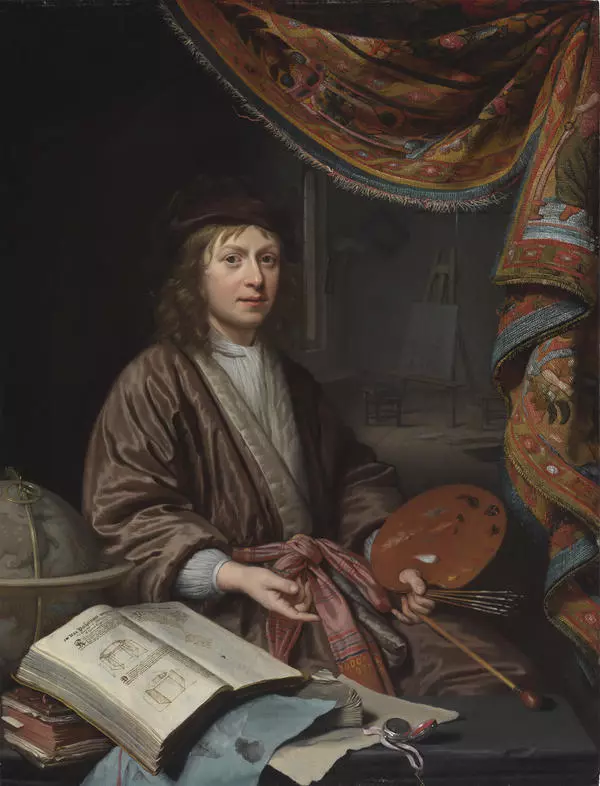Michael van Müsscher, a Dutch painter and graphic artist, was born in Rotterdam in 1645. His father and grandfather were painters. The boy began painting at the age of five. When he was fifteen, he moved with his family to Amsterdam, where he lived and worked for the rest of his life.
Müsscher apprenticed with various masters, including the portrait painter Gabriel Metsu and Adriaen van Ostade, renowned for his domestic scenes. His style also reflects the influence of Frans van Mieris. His smooth and refined technique, and his style marked by meticulous detailing, were very characteristic of the Leiden art school. Müsscher’s talent was revealed in his depiction of fine strokes and textures: on his canvases one could make out the finest nuances, right down to the letters on the pages of the depicted books. The artist might have used a magnifying glass for this kind of work.
In the 17th century Holland, only wealthy citizens could afford to commission a portrait of themselves. Burghers purchased such canvases for their homes or for the premises of the guild to which they belonged. There were portraits of one or two persons, as well as paintings with larger number of characters.
The canvas shows a married couple in the interior of their home. In the center there is a lady in black, with her right hand clutching a cloak and her left one holding papers on the edge of the table. On the right side of the painting there is a table covered with a patterned carpet; a man in a brick-colored robe is sitting at it. The artist spotlights the characters in the painting — their faces contrast with the dark room. The outfits, the carpet, the floor tiled with white and black squares and the courtyard with a fountain — all of these suggest affluence of the characters on the canvas. Apparently, this family was wealthy enough to afford to commission a painting from one of the most popular portrait painters in the 17th century Holland.
Müsscher apprenticed with various masters, including the portrait painter Gabriel Metsu and Adriaen van Ostade, renowned for his domestic scenes. His style also reflects the influence of Frans van Mieris. His smooth and refined technique, and his style marked by meticulous detailing, were very characteristic of the Leiden art school. Müsscher’s talent was revealed in his depiction of fine strokes and textures: on his canvases one could make out the finest nuances, right down to the letters on the pages of the depicted books. The artist might have used a magnifying glass for this kind of work.
Michael van Müsscher was one of the most sought-after portraitists of his time, but he also painted genre pictures and miniatures. Throughout his lifetime, he produced 135 works. The canvases by this painter are kept in the largest museums of the Netherlands — the Rijksmuseum in Amsterdam, the Mauritshuis in The Hague, the Museum Boijmans van Beuningen in Rotterdam. The Far Eastern Art Museum houses his “Family Portrait”, one of the painter’s traditional works.
In the 17th century Holland, only wealthy citizens could afford to commission a portrait of themselves. Burghers purchased such canvases for their homes or for the premises of the guild to which they belonged. There were portraits of one or two persons, as well as paintings with larger number of characters.
The canvas shows a married couple in the interior of their home. In the center there is a lady in black, with her right hand clutching a cloak and her left one holding papers on the edge of the table. On the right side of the painting there is a table covered with a patterned carpet; a man in a brick-colored robe is sitting at it. The artist spotlights the characters in the painting — their faces contrast with the dark room. The outfits, the carpet, the floor tiled with white and black squares and the courtyard with a fountain — all of these suggest affluence of the characters on the canvas. Apparently, this family was wealthy enough to afford to commission a painting from one of the most popular portrait painters in the 17th century Holland.




